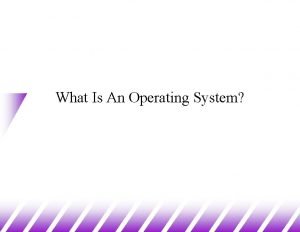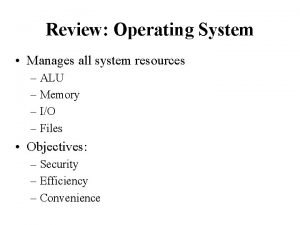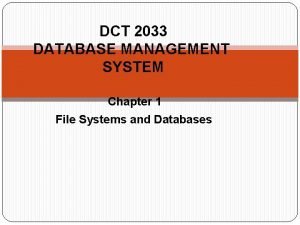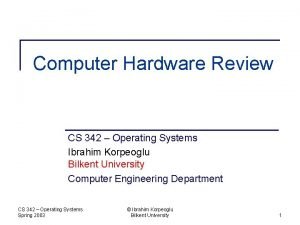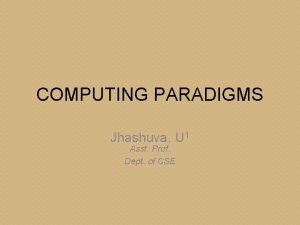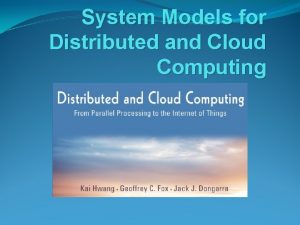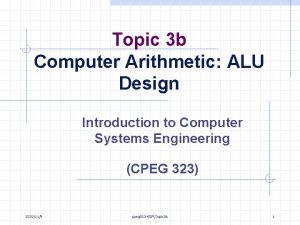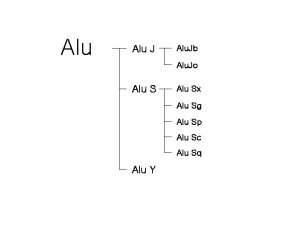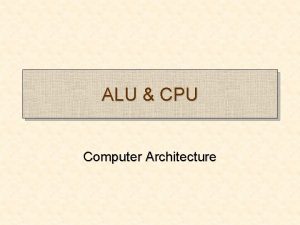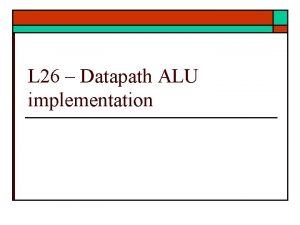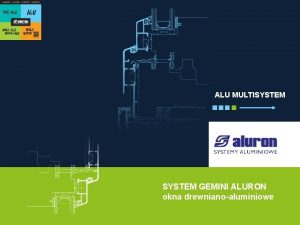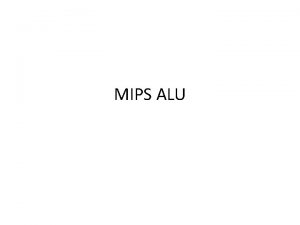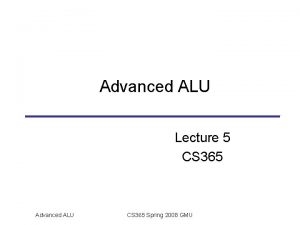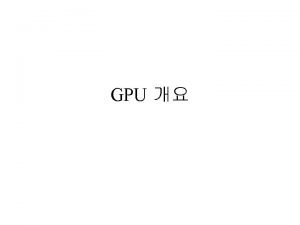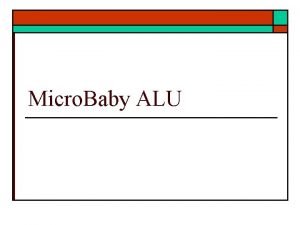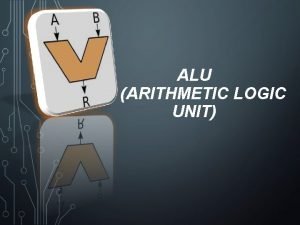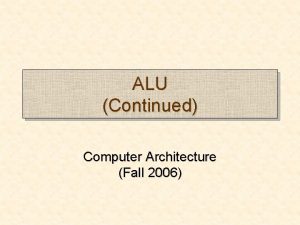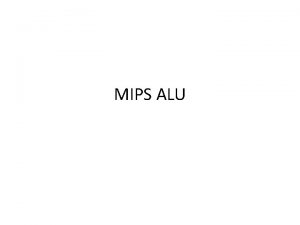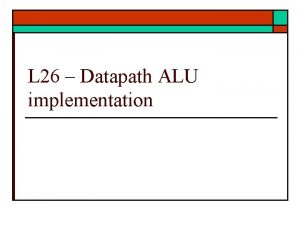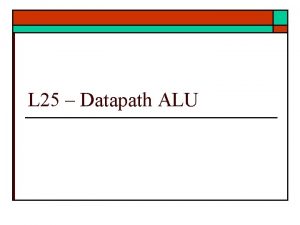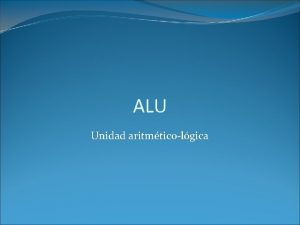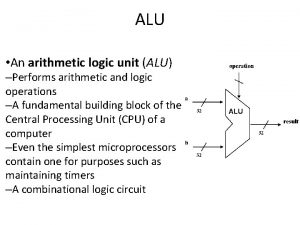Review Operating System Manages all system resources ALU




















- Slides: 20

Review: Operating System • Manages all system resources – ALU – Memory – I/O – Files • Objectives: – Security – Efficiency – Convenience

What is a process? • Any running program including its context and environment: – Register content – Memory content and address space – PC – State (example: waiting for I/O)

Process Management • Why process management? – There is only one (or a limited number of) CPU per computer, but most of the time many programs run at the “same” time – Multi user systems such as sales, debit or eureka (UNIX machines of Stern) – All modern computer support multitasking via time slicing – List of current processes • Task list on PC after CTR-Alt-Del • top command under UNIX

Process abstraction and context • Any process feels as if he was the only one running on the machine, he does not need to know anything about any other process (unless related) • But a processor has a limited amount of physical resources and every process on the machine has its own set of registers. Solution: save and restore hardware state on a context switch. Save the state in Process Control Block (PCB)

Process Control Block • All information that is associated with a process – Process state (new, ready, waiting …) – PC (Program Counter) how far got the execution – CPU Register content – Memory management information – I/O status – Some accounting (open files …) • All this information has to be updated whenever the process changes state: Overhead!

Historical Difference UNIX, DOS • Uniprogramming: one process at a time • Multiprogramming: multiple processes • DOS was originally uniprogramming – One key problem with DOS is that there is no memory protection - one program may write the memory of another program, causing weird bugs. • Unix plus all currently envisioned new operating systems allow system to separate out activities cleanly

Process Creation • Parent processes create child processes, which in turn create further child processes • Resource sharing – degree of sharing can vary from all to none • Execution – concurrently – parent waits for child to terminate – example in UNIX: call child with & option keeps the parent active

Process Termination • User logs off • Quit an application – User interaction – Time limit exceeded • Process finished: Normal completion • Error – Memory unavailable – Arithmetic error – Security error: Memory or file

Process Termination • • • I/O Failure Invalid instruction (you tried to execute data) Operating system intervention (e. g. deadlock) Parent terminates (shell logout) Parent requests termination(kill)

Process States • During Execution a process changes state – new: The process is being created • User calls a program • Some program starts another process – running: Instructions are executed – waiting: The process is waiting for an event to occur – ready: The process is waiting to be executed – terminated: The process has finished execution

Diagram of Process States new exit admitted terminated interrupt ready running scheduler I/O or event completion waiting I/O or event wait

Process States Example

Memory

CPU Switch from Process to Process P 0 executing OS P 1 Interrupt Save state in PCB 0 idle Load state from PCB 1 idle Interrupt executing Save state in PCB 1 Load state in PCB 0 executing idle

Interrupts • Two types: Hardware and Software • Hardware interrupts are generated by a physical device • Software generated by OS for instance after timeout of running process • Interrupt register/bus that communicates interrupt to the control unit of CPU • Different Levels – depending on the priority of the current process, lower level interrupts can be ignored – hardware have usually higher priority than software interrupts

Context Switch • When CPU switches to another process, the system must save the state of the old process and load the saved state for the new process • Context switch time is overhead during which the system does no useful work • Overhead depends on hardware support • Question: You have 6 big job to run on a 2 processor machine. What is the optimal strategy to start them?

Scheduling Objectives • Fairness – Give equal and fair access to all processes • Responsiveness – Discriminate between different classes of jobs • Efficiency – Maximize throughput – Minimize response time – Accommodate as many uses as possible

Process Scheduling Queues • Job queue - all processes in the system • Ready queue - all processes residing in main memory ready and waiting to execute • Device queue - set of processes waiting for an I/O device • Process migration between various queues

Two Queues

Appendix: UNIX Commands • ps: show all processes that were started from this shell – ps -u username : all processes started by user • top: show all processes running on the computer • kill id : Stop running process with id • nohup: make process immune to high level interrupts • nice +int process: change the priority of a process
 Before operating system
Before operating system Operating system manages
Operating system manages A large population of aloha users manages to generate
A large population of aloha users manages to generate Hedging manages risk that are manageable
Hedging manages risk that are manageable Dbms manages the interaction between and database
Dbms manages the interaction between and database Computer hardware review in operating system
Computer hardware review in operating system Name all the lines
Name all the lines The transformation process
The transformation process Fixed and variable resources examples
Fixed and variable resources examples Renewable vs nonrenewable resources worksheet
Renewable vs nonrenewable resources worksheet Outdoor recreation resources review commission
Outdoor recreation resources review commission It is making use of all personal resources
It is making use of all personal resources All resources are tightly coupled in computing paradigm of
All resources are tightly coupled in computing paradigm of Definition of personal effectiveness
Definition of personal effectiveness Explain system models for distributed and cloud computing
Explain system models for distributed and cloud computing Buddy system memory
Buddy system memory File system in operating system
File system in operating system Ufs4.0
Ufs4.0 File system in operating system
File system in operating system Alu operations
Alu operations Set less than alu
Set less than alu
